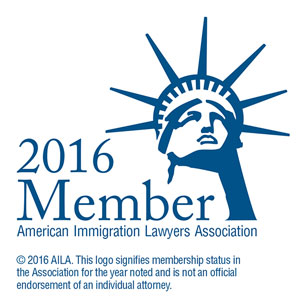Resolving Conflicts of Interest When an H-1B Worker is Terminated
The recent trend of issuing a Notice to Appear (NTA) to terminated H-1B workers – even within their 60-day grace period – has created new ethical challenges for immigration attorneys who often represent both employer and employee.[1] The NTA is the document that begins removal proceedings. The removal proceeding against the H-1B worker is initiated when the employer notifies USCIS about the termination even though the H-1B worker is within their 60-day grace period.[2]
An employer must pay the H-1B worker until there is a termination of employment.[3] The Department of Labor has insisted that the employer only effectuates a bona fide termination if it notifies USCIS under 8 CFR §214.2(h)(11), otherwise the DOL will continue to hold the employer liable for back wages even if the employee has been terminated.
Immigration attorneys generally represent both employer and employee, and they face a potential conflict especially since the employee will likely receive an NTA if there is a termination and the employer notifies the USCIS. Yet, the employer must be advised to notify the USCIS about the H-1B worker’s termination to avoid back wage liability. In Amtel Group of Florida v. Yongmahapakorn, [4] the Administrative Review Board (ARB) held that an employer must meet three requirements to effectuate a bona termination of the relationship under 20 CFR §655.731(c)(7)(ii): (1) the employer must expressly terminate the employment relationship with the H-1B worker, (2) the employer must notify USCIS of the termination so that the USCIS can revoke its prior approval of the employer’s H-1B petition under 8 CFR 214.2(h)(11), and (3) the employer must provide the H-1B worker with payment of return transportation home under INA 214(c)(5)(A) and 8 CFR 214.2(h)(4)(iii)(E).[5]
The attorney can navigate this conflict under the American Bar Association’s Model Rule 1.7 (although the attorney needs to refer to the analog of the Model Rule under their state bar rules of professional conduct). Model Rule 1.7 permits the attorney to represent clients notwithstanding a conflict so long as the attorney can competently and diligently represent both clients, and each affected client has given informed consent in writing. Comment 22 to Rule 1.7 authorizes advance waivers to conflicts of interest under certain circumstances.[6] If the conflict is foreseeable, such as termination of employment in the future, there is a greater likelihood that the client will have the requisite understanding and give informed consent.
The attorney should inform both employer and employee at the outset of the presentation regarding what will happen if there is termination.[7] The clients should be informed about the employer’s obligation to notify USCIS at the point of termination. A change or extension of status should be filed prior to the last day of termination if possible. If the H-1B worker is placed in removal, the proceeding may be terminated by an Immigration Judge if the H-1B worker’s change or extension of status is approved.[8] If the employer does not consent to the representation of the employee post termination, the H1-B worker should be referred to independent counsel for advice and representation.
Some attorneys undertake sole representation of the employer in the H-1B context to avoid these sorts of conflicts, but this should be undertaken carefully as the sole representation model could break down if the attorney was advising the employee and the employee assumed that the employer’s attorney was also representing the employee and relied on advice. The sole representation model could also potentially break down after the employer starts the green card process and the attorney becomes more involved in advising the employee especially regarding adjustment of status, which is filed by the employee.
Arguably advising an employer to notify the USCIS about the termination of the H-1B worker may not pose a conflict as the employer is obligated to follow the rule to avoid back wage liability. This may have been the case before the current administration started issuing an NTA and cutting short the 60-day grace period. The withdrawal of the H-1B can now result in devastating consequences for the H-1B worker who may be placed in removal proceedings. When there is a conflict, the attorney is required to withdraw from the representation of both affected clients. However, in the immigration context this will neither serve the interests of the employer and terminated H-1B worker especially when the attorney represents the employer with multiple H-1B workers. Instead, it would be more prudent for the attorney to represent both by setting forth the parameters of the representation between the employer and employee client at the very outset of the representation, which will enable the attorney to handle the representation of both clients more readily if there is termination down the road.
There may be situations where the attorney started representing the employer and not the H-1B worker who may have been overseas at the time of initiating the H1-B process. However, it would still be incumbent upon the attorney to notify the employee about the potential consequences of the employer notifying the USCIS about the termination. The employee should also be advised about the consequences of the withdrawal, which could potentially result in the initiating of removal proceedings. If the attorney will be unable to represent the employee in removal proceedings, the employee should be advised to seek independent counsel in this regard.
In a situation where the attorney is more in contact with an employer and is advising that employer on a variety of immigration matters for its employees, the employee could be considered as as an accommodation or secondary client that may enable the attorney to continue to represent the employer and not the employee upon termination.[9] In Rite Aid Corporation Securities Litigation, [10] which was not an immigration case but a good example of how this would play out in immigration practice, the court held that the informed consent standard may be dropped to its lowest point when there is an “accommodation client.” There the same law firm represented Rite Aid and the CEO, and in the engagement letter, the law firm indicated that in the event of a conflict, the firm would continue to represent Rite Aid while CEO would retain separate counsel. The conflict waiver was upheld because the CEO was an accommodation client as he agreed to engage counsel through the corporation. It is worth pointing out that in the immigration context, the attorney continues to represent the employer client but withdraws from representing the terminated H-1B worker and does not take any adverse action against the worker such as claiming damages.
By setting clear expectations, obtaining informed consent, and navigating conflicts with diligence, attorneys can effectively manage dual representation in H-1B cases while safeguarding the interests of both the employer and the employee. In the event that the attorney has to opt out from representing the employee, that may be permissible if the employee is expeditiously referred to independent counsel to represent them in the removal case. As USCIS practices change under the Trump administration, immigration lawyers must continually reassess their engagement strategies and update conflict waivers to reflect new risks.
[1] See https://www.nafsa.org/regulatory-information/reports-ntas-issued-h-1bs-after-employer-withdraws-petition
[2] See 8 CFR 214.1(l)(2). One possible explanation for issuing an NTA during the grace period is that the regulation also allows for the 60-day grace period to be shortened or eliminated
[3] See 20 C.F.R. § 655.731(c)(7)(i).
[4] See ARB Case No. 04-087, ALJ Case No. 2004-LCA-006 (Sept. 29, 2006),
[5] Cf. Jain v. Metromile, Inc., ALJ Case No. 2021-LCA-00018 (July 19, 2022) (the back wages obligation stops when USCIS approves a change of employer petition on behalf of the H-1B worker); Vinayagam v. Cronous Solutions, Inc., ARB Case No. 15-045, ALJ Case No. 2013-LCA-029 (ARB Feb. 14, 2017) (employer’s failure to pay return transportation costs for a terminated H-1B employee was not fatal when the worker voluntarily decided not to return to her home country but instead remained in the U.S. and sought H-1B status through a new employer).
[6] See ABA Formal Op. 05-434 on advance waivers.
[7] Even if an attorney cannot foresee conflicts in join representation, NYC Bar Op. 2017-7 advises that the lawyer must nevertheless explain the implications of the joint representation to the extent “reasonably necessary to permit the client[s] to make informed decisions regarding the representation.”
[8] 8 CFR 1003.18(d)(1)(D)(4).
[9] The notion of the primary and secondary client exists in case law. See Allegaert v. Perot, 565 F.2d 246 (2d Cir.1977). See also Cyrus D. Mehta, “Finding the “Golden Mean” in Dual Representation,” Immigration & Nationality Law Handbook, 2005-06 Ed. at 29, copyright © 2005 American Immigration Lawyers Association (AILA); reprinted in AILA’s Selected Fundamentals Of Immigration Law 2005-06 Ed. A version of the article is also available on AILA InfoNet at AILA Doc. No. 07081769 (posted August 17, 2007). See also “Finding the ‘Golden Mean’ in Dual Representation – Updated”, Immigration Briefings, August 2006, © 2006 West, a Thomson business.
[10] 139 F. Supp.2d 649 (E.D. Pa. 2001). See also SuperCooler Tech v. The Coca Cola Co., 6:23-cv-187-CEM-RMV (M.D. Fla. Jul. 17, 2023) (advance waiver upheld when Coca Cola consented to law firm .representing another client SuperCooler in a lawsuit accusing Coca-Cola of misappropriation of trade secrets and intellectual property and sought over $100 million in damage).





Leave a Reply
Want to join the discussion?Feel free to contribute!